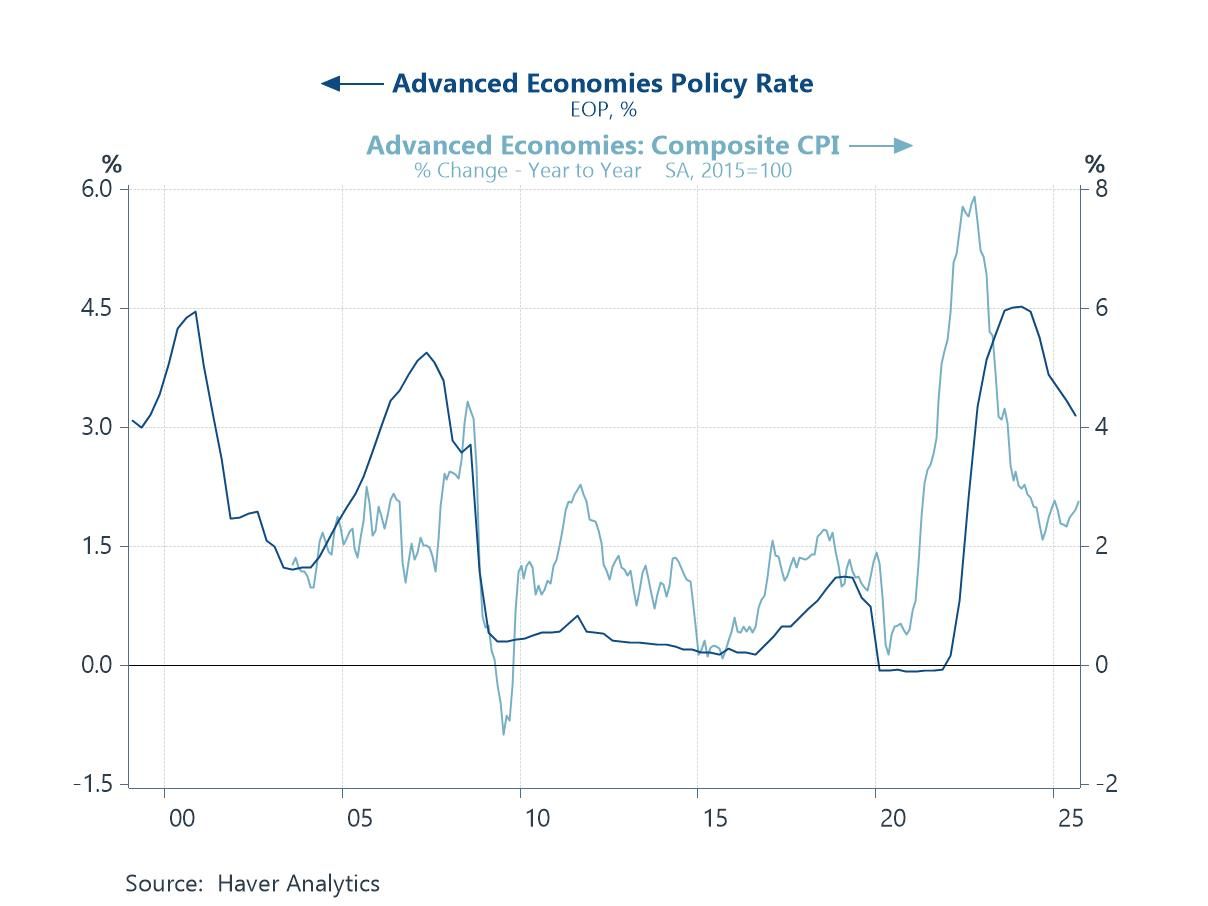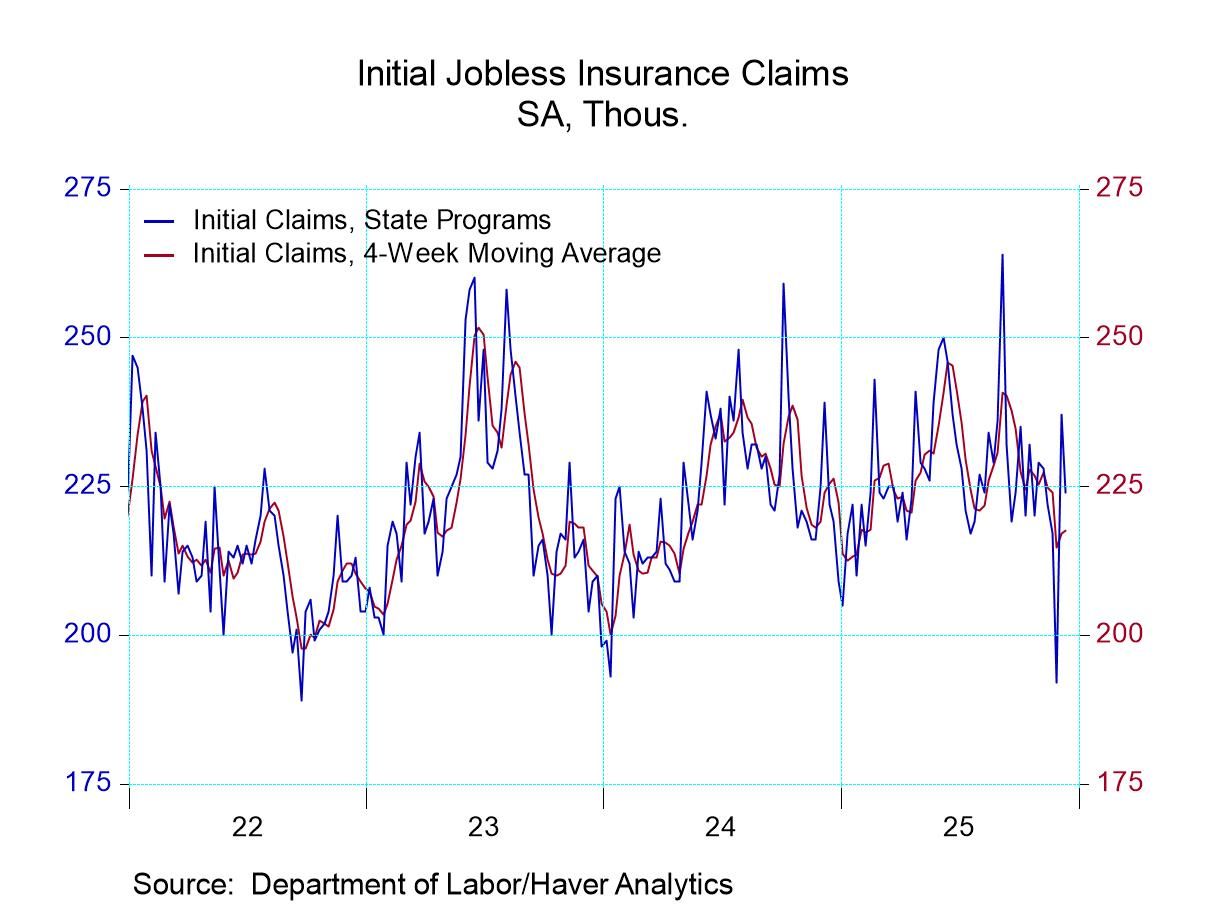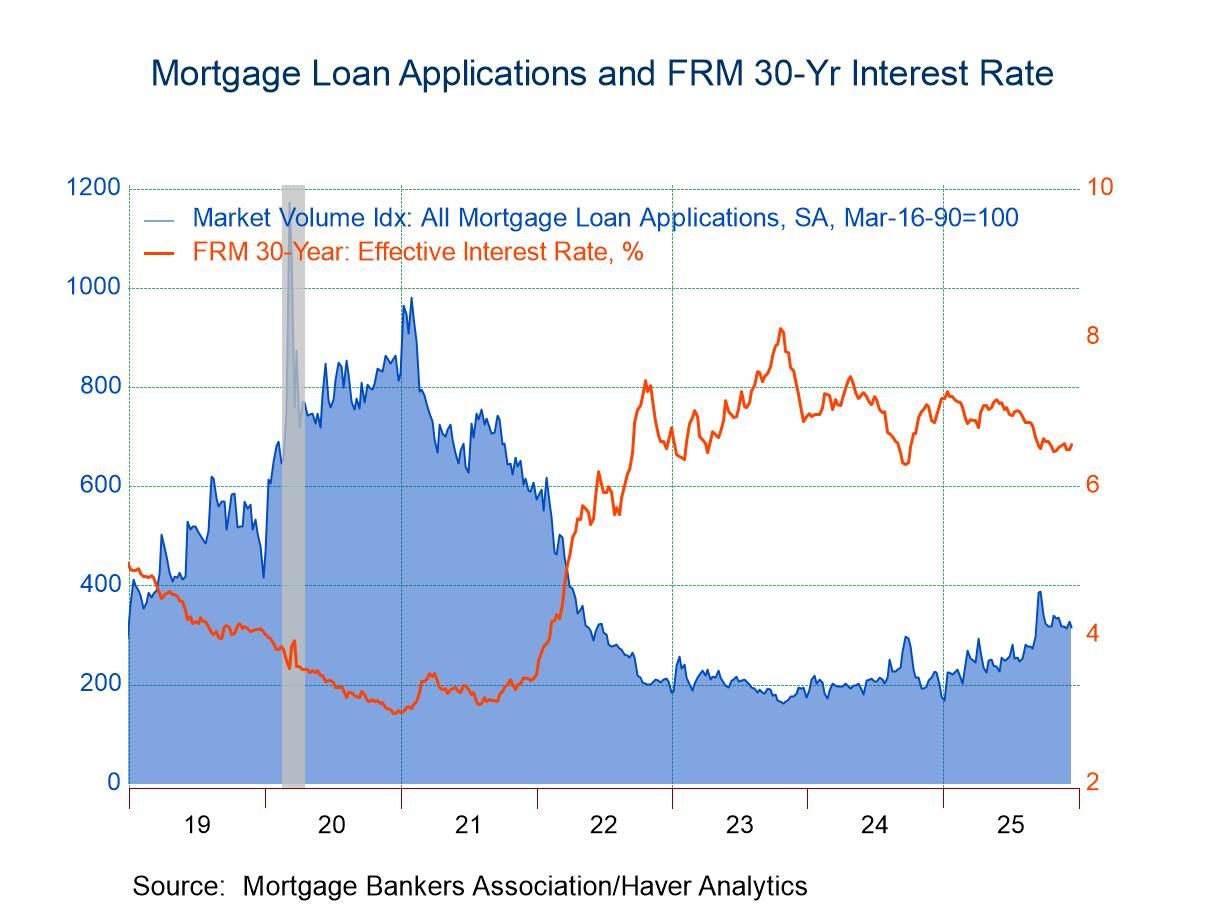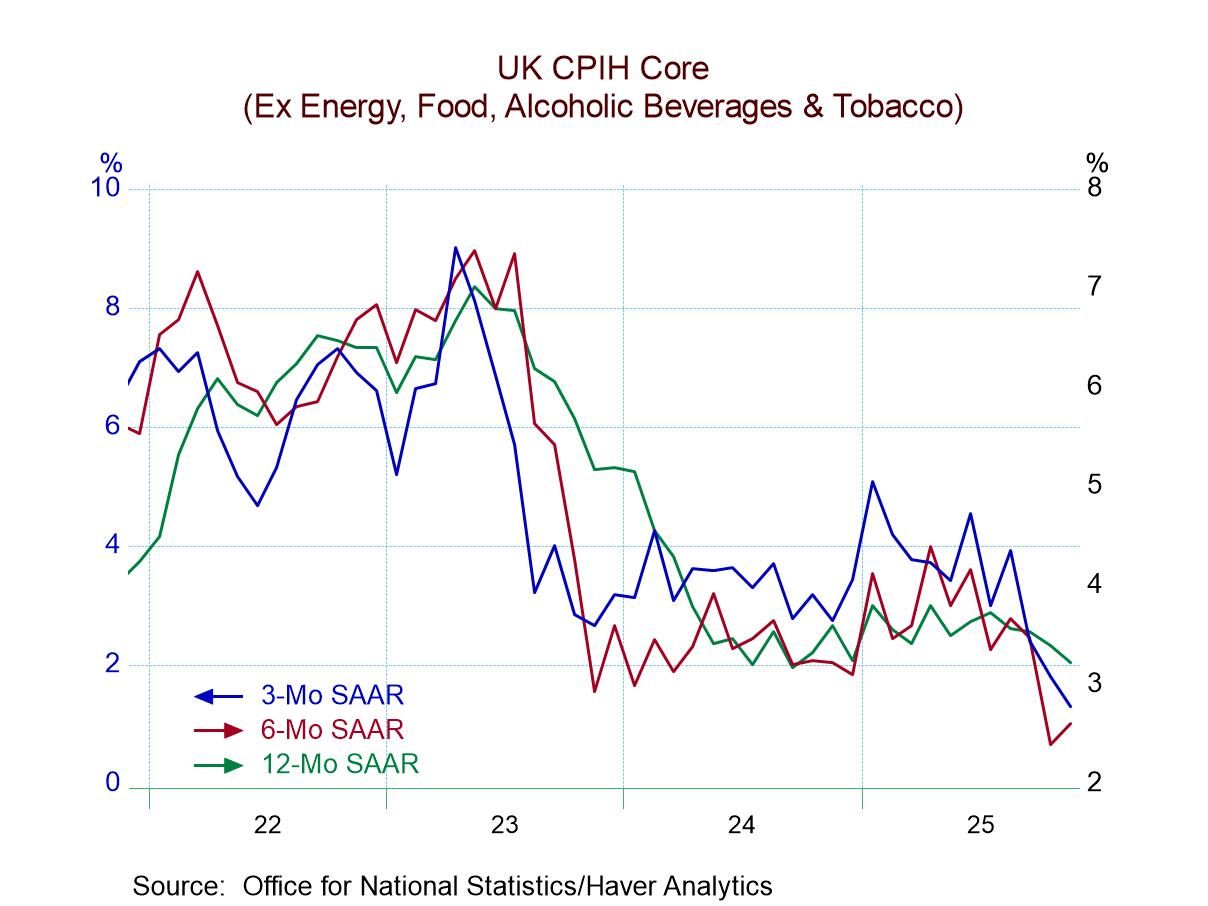 Global| Mar 01 2021
Global| Mar 01 2021Manufacturing PMIs Are Strengthening More in the Developed World
Summary
PMIs largely are improving in February with declines in only six and increases in eight (excluding France and Germany who already are counted in the EMU). The unweighted average for February rose for the overall group (excluding [...]
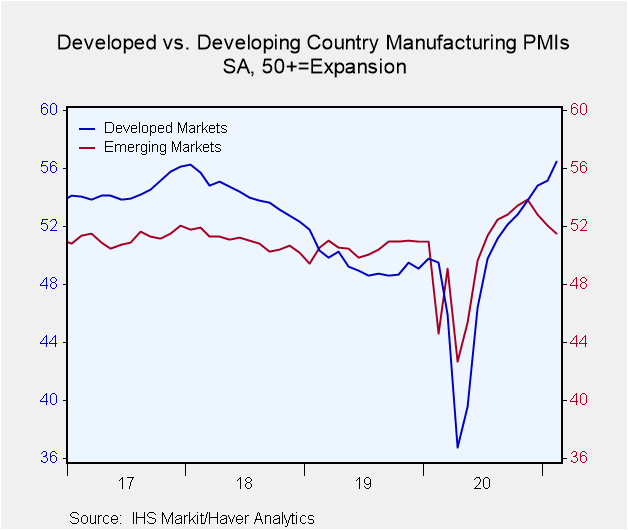 PMIs largely are improving in February with declines in only six and increases in eight (excluding France and Germany who already are counted in the EMU). The unweighted average for February rose for the overall group (excluding France and Germany) to 53.7 in February from 53.5 in January. the BRIC average rose to 54.6 from 54.2. The average for the U.S., the U.K., the EMU, Canada and Japan rose by even more to 55.6 from 54.4. The Asian average slipped to 51.7 from 51.9.
PMIs largely are improving in February with declines in only six and increases in eight (excluding France and Germany who already are counted in the EMU). The unweighted average for February rose for the overall group (excluding France and Germany) to 53.7 in February from 53.5 in January. the BRIC average rose to 54.6 from 54.2. The average for the U.S., the U.K., the EMU, Canada and Japan rose by even more to 55.6 from 54.4. The Asian average slipped to 51.7 from 51.9.
As the headline graph shows, this is partly due to the phenomenon that developed countries are doing better than developing countries. Developing countries also are getting and distributing more vaccines than developing countries, but it seems too early in this vaccination process for this to be the reason. It may also be due to the fact that developed countries simply have had better resources and facilities to deal with Covid-19 breakouts. Still, we see ample evidence that in developed countries the service sectors are doing much worse than the manufacturing sectors and developed economics have still been under the weight of spreading Covid-19 of different degrees suffering through of restrictions and lockdowns. It is manufacturing that remains more resilient than services.
Recent PMI trends
The data also show that February is an improvement from January where 8 countries (excluding France and Germany) saw PMI declines. However, December had only seen three setbacks overall.
Over three months, there are five countries with setbacks compared to their six-month averages and one with an unchanged reading. Over six months, all countries improve relative to their 12-month average. Over 12 months, there are 7 countries that are weaker than their 12-month average of 12-months ago.
The progressions show clear improvement across the PMI front. If we assess the various PMIs by ranking them since December 2016, there are three in the top 10th percentile of their queue of values and three more in the top 20th-10th percentile cohort. There are now only four of 15 (full count) that are below a 50th percentile standing (50% marks the median for each series).
The vaccine situation
Since Covid-19 struck, it has hit and spread unevenly globally in terms of the force of its impact as well as on a timing scale. Still, all countries except Malaysia and China have manufacturing PMI readings higher than their January 2020 levels. Germany is exceptionally strong followed more distantly by the euro area, Brazil, the U.S., the U.K. and France. Note that the bottom five countries are Malaysia, China, Turkey, Vietnam and Indonesia. Developing countries are having a harder time bouncing back (Brazil is an exception).
The FDA in the U.S. has just approved a new drug; this one a single shot vaccine from J&J to be used in the fight against Covid-19. The vaccine progress continues. It is estimated that 241 million shots have been given globally across 103 countries. (Of these, nearly one-third) 75.2 million doses have been given in the United States (Source here). In the U.S., more have been given doses than having tested positive for the virus since the pandemic began.
In the U.S., the latest vaccination rate is 1,735,053 doses per day, on average. At this rate, it will take an estimated 8 months to cover 75% of the population with a two-dose vaccine (Source here).
On February 24, the global vaccine rollout began as COVAX announced 600,000 doses of the AstraZeneca/Oxford vaccine licensed to Serum Institute of India had arrived in Accra, Ghana; further deliveries to Abidjan, Cote d’Ivoire are expected this week (Source here). African countries have started vaccinations after receiving vaccine through COVAX. Ivory Coast began the process of vaccination on Monday; Ghana is next in line. The developing countries are a step behind, but they are in gear.
The vaccine rollout should help to cement the global recovery and the COVAX program should help to keep developing economies from falling farther behind developed countries where the vaccination progress is further along.
Buffering progresses
While manufacturing is more buffered from the virus effects than the service sector, to get manufacturing in full gear and back to normal a fully-functioning service sector will also be required. It is much more enjoyable to write about how well this progress is going than to give excuses why economic data are performing so badly. That also is evidence that conditions truly are improving. No one is quite sure how much vaccination is needed to get to the point of herd immunity. But in the U.S., vaccinations are at about 22% of the population and that degree of immunization (coupled with anti-bodies from past infections) may already be offering some of the benefits of herd immunity by creating some buffering and suppressing some of the spread.
What happens if the cart goes faster than the horse?
This is just another reason why the $1.9 trillion ‘rescue package’ that just passed in the U.S. House of Representatives is too big. Not only are we on our way in the U.S. to getting herd immunity, but that and that alone, will give us a safe path to reopen businesses and to hire in the now-shuttered service sector again. Money won’t do it. We can expect the economy to grow into its newly opened areas as soon as people lose their fear of the disease. Pushing in gobs of money ahead of that reopening will not make reopening any faster. That’s the problem: this is too much, money too soon. Recovery is less about money right now and more about what the general public and government officials deem to be safe. Some amount of targeted support money, of course, is essential, but ingesting this enchilada whole will give heart-burn, guaranteed.
Robert Brusca
AuthorMore in Author Profile »Robert A. Brusca is Chief Economist of Fact and Opinion Economics, a consulting firm he founded in Manhattan. He has been an economist on Wall Street for over 25 years. He has visited central banking and large institutional clients in over 30 countries in his career as an economist. Mr. Brusca was a Divisional Research Chief at the Federal Reserve Bank of NY (Chief of the International Financial markets Division), a Fed Watcher at Irving Trust and Chief Economist at Nikko Securities International. He is widely quoted and appears in various media. Mr. Brusca holds an MA and Ph.D. in economics from Michigan State University and a BA in Economics from the University of Michigan. His research pursues his strong interests in non aligned policy economics as well as international economics. FAO Economics’ research targets investors to assist them in making better investment decisions in stocks, bonds and in a variety of international assets. The company does not manage money and has no conflicts in giving economic advice.



